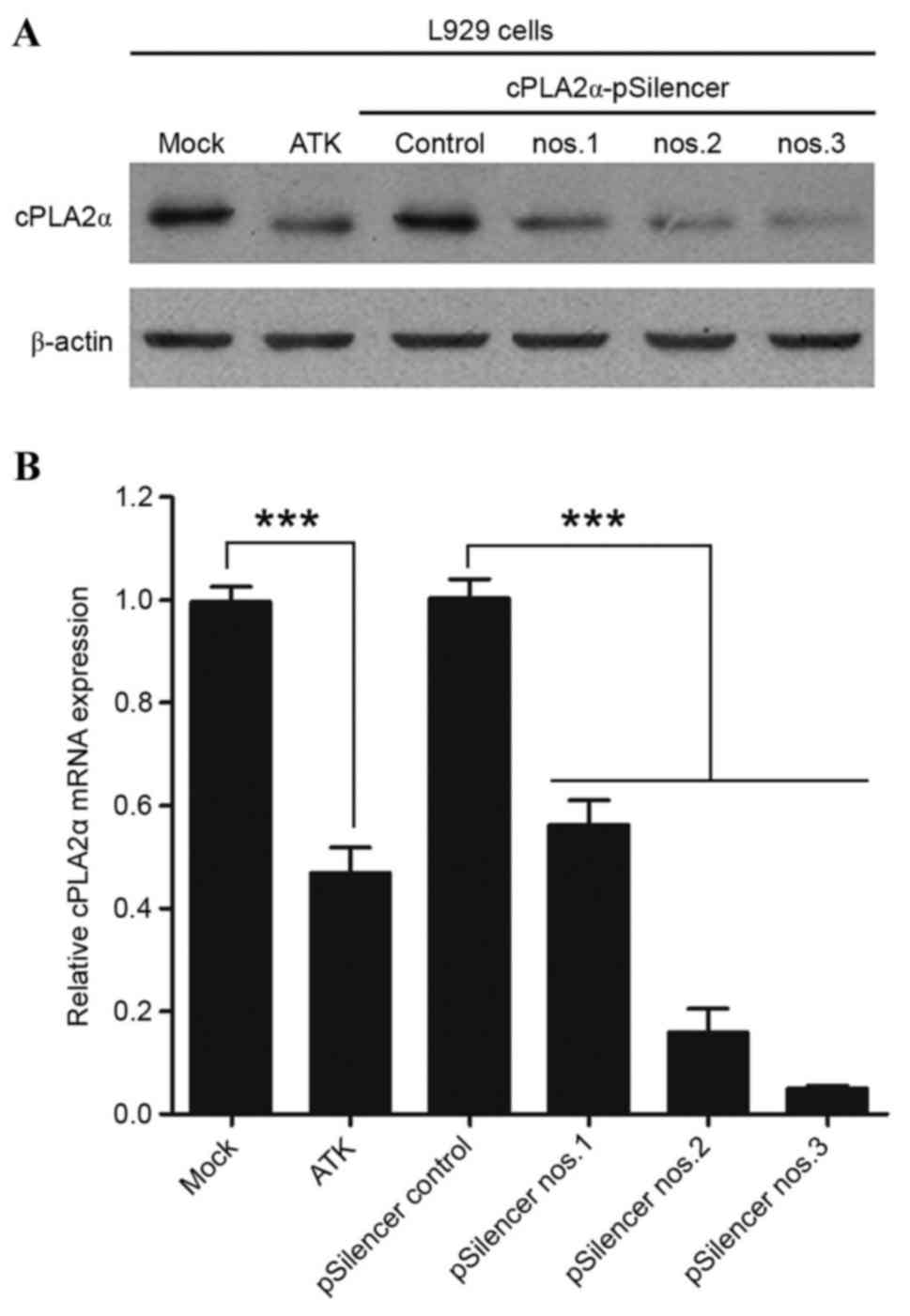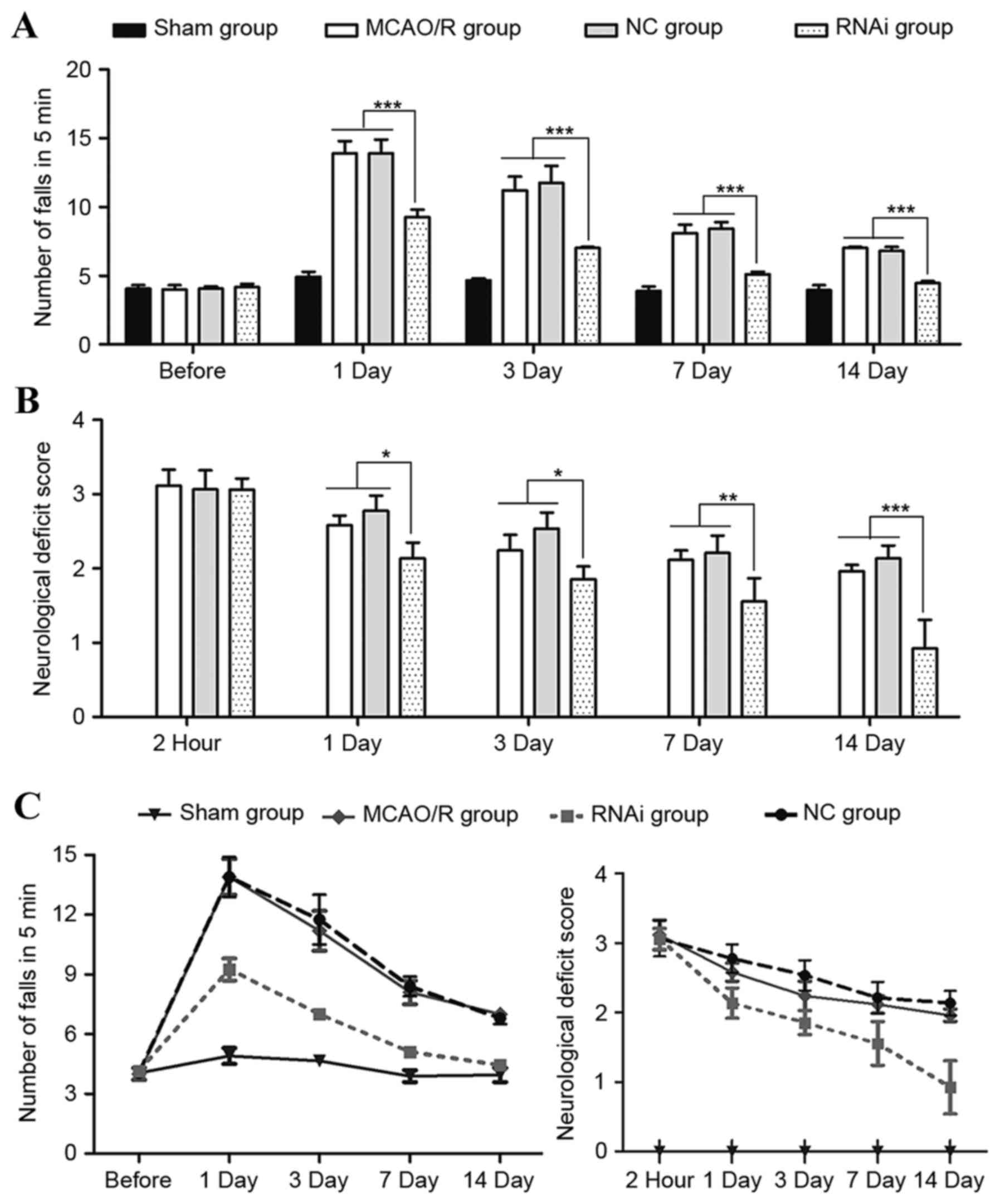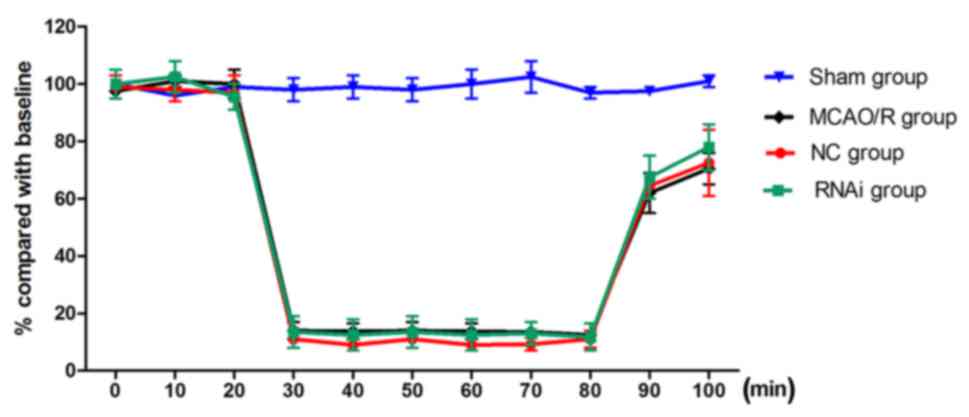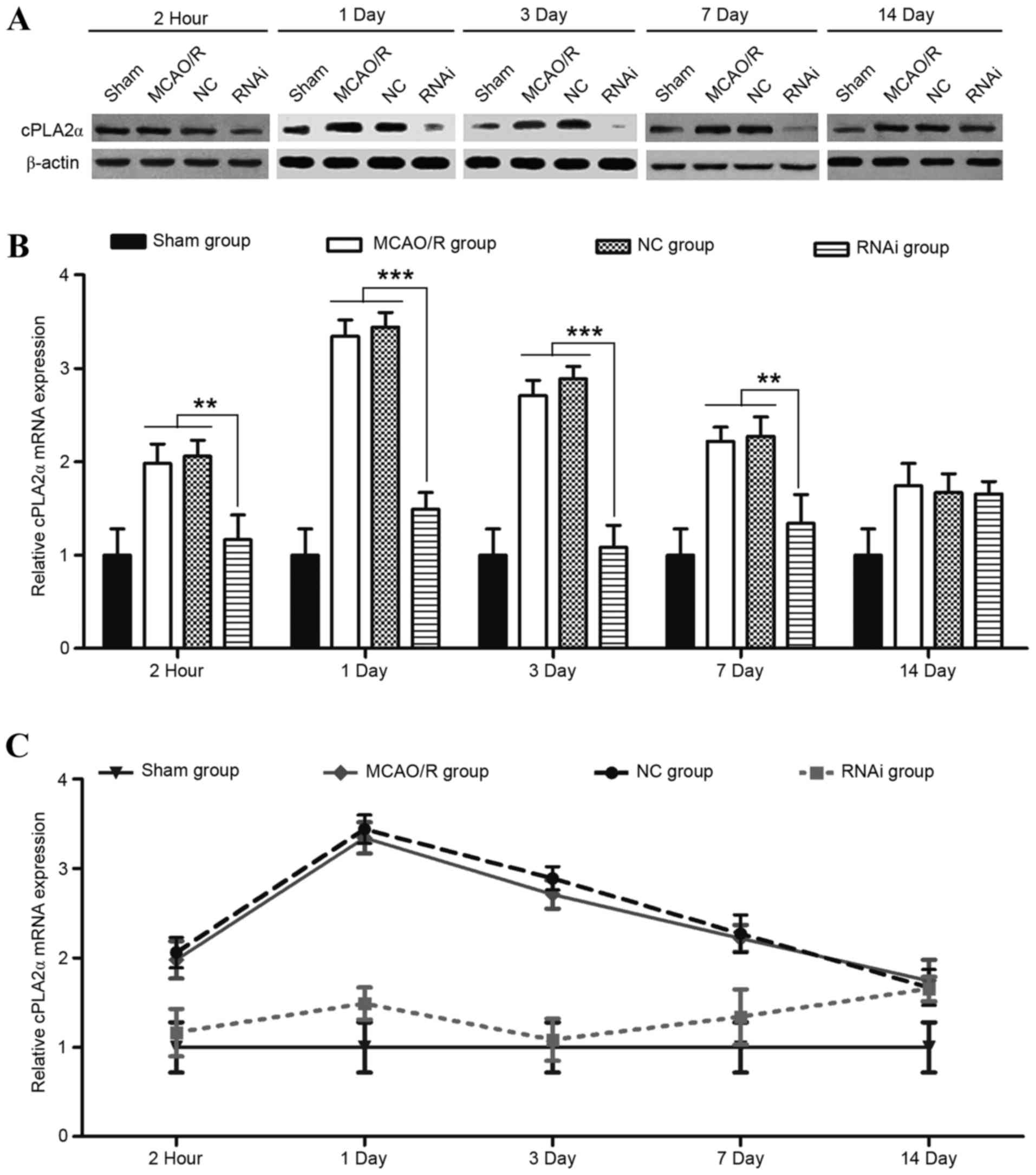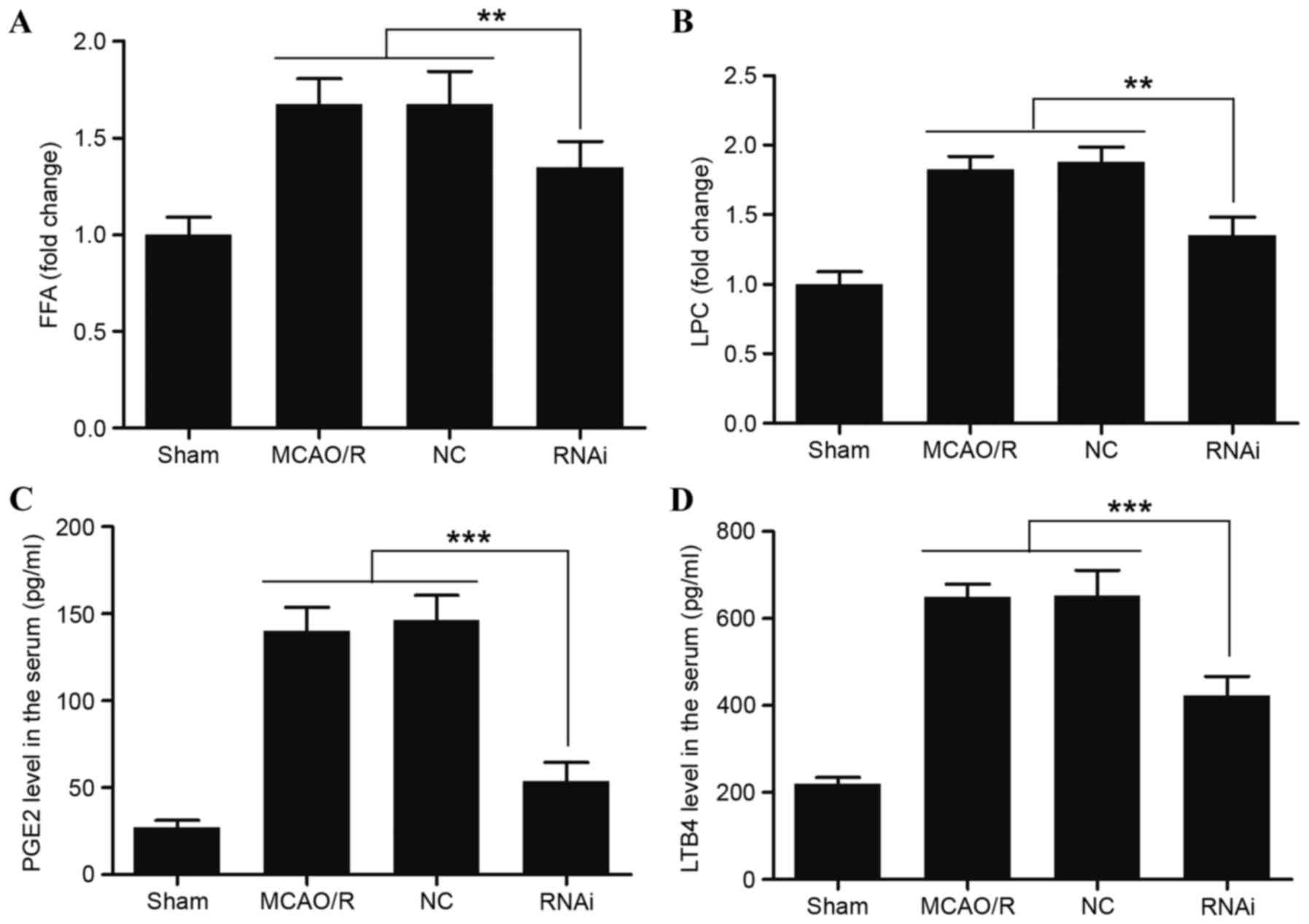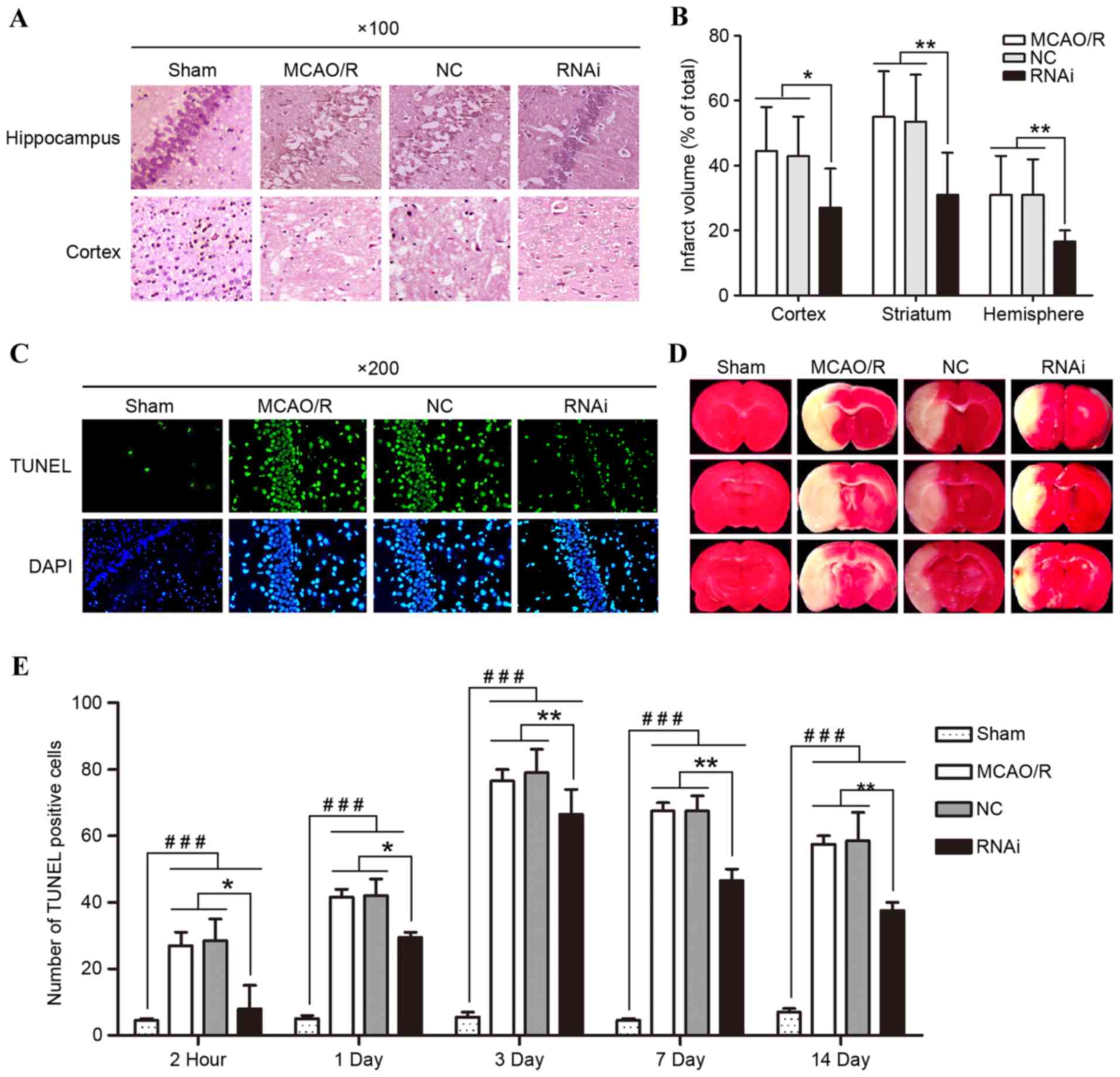|
1
|
Arai K, Ikegaya Y, Nakatani Y, Kudo I,
Nishiyama N and Matsuki N: Phospholipase A2 mediates ischemic
injury in the hippocampus: A regional difference of neuronal
vulnerability. In Eur J Neurosci. 13:2319–2323. 2001. View Article : Google Scholar
|
|
2
|
Bonventre JV, Huang Z, Taheri MR, O'Leary
E, Li E, Moskowitz MA and Sapirstein A: Reduced fertility and
postischaemic brain injury in mice deficient in cytosolic
phospholipase A2. Nature. 390:622–625. 1997. View Article : Google Scholar : PubMed/NCBI
|
|
3
|
Brady KM, Texel SJ, Kishimoto K, Koehler
RC and Sapirstein A: Cytosolic phospholipase A alpha modulates NMDA
neurotoxicity in mouse hippocampal cultures. Eur J Neurosci.
24:3381–3386. 2006. View Article : Google Scholar : PubMed/NCBI
|
|
4
|
Ward NC, Croft KD, Blacker D, Hankey GJ,
Barden A, Mori TA, Puddey IB and Beer CD: Cytochrome P450
metabolites of arachidonic acid are elevated in stroke patients
compared with healthy controls. Clin Sci (Lond). 121:501–507. 2011.
View Article : Google Scholar : PubMed/NCBI
|
|
5
|
Moskowitz MA, Lo EH and Iadecola C: The
science of stroke: Mechanisms in search of treatments. Neuron.
67:181–198. 2010. View Article : Google Scholar : PubMed/NCBI
|
|
6
|
Menschikowski M, Hagelgans A and Siegert
G: Secretory phospholipase A2 of group IIA: Is it an offensive or a
defensive player during atherosclerosis and other inflammatory
diseases? Prostaglandins Other Lipid Mediat. 79:1–33. 2006.
View Article : Google Scholar : PubMed/NCBI
|
|
7
|
Gabryel B, Chalimoniuk M, Stolecka A and
Langfort J: Activation of cPLA2 and sPLA2 in astrocytes exposed to
simulated ischemia in vitro. Cell Biol Int. 31:958–965. 2007.
View Article : Google Scholar : PubMed/NCBI
|
|
8
|
Williams SD and Gottlieb RA: Inhibition of
mitochondrial calcium-independent phospholipase A2 (iPLA2)
attenuates mitochondrial phospholipid loss and is cardioprotective.
Biochem J. 362:23–32. 2002. View Article : Google Scholar : PubMed/NCBI
|
|
9
|
Kishimoto K, Li RC, Zhang J, Klaus JA,
Kibler KK, Doré S, Koehler RC and Sapirstein A: Cytosolic
phospholipase A2 alpha amplifies early cyclooxygenase-2 expression,
oxidative stress and MAP kinase phosphorylation after cerebral
ischemia in mice. J Neuroinflammation. 7:422010.PubMed/NCBI
|
|
10
|
Shen Y, Kishimoto K, Linden DJ and
Sapirstein A: Cytosolic phospholipase A(2) alpha mediates
electrophysiologic responses of hippocampal pyramidal neurons to
neurotoxic NMDA treatment. Proc Natl Acad Sci USA. 104:pp.
6078–6083. 2007; View Article : Google Scholar : PubMed/NCBI
|
|
11
|
Zhang J, Barasch N, Li RC and Sapirstein
A: Inhibition of cytosolic phospholipase A(2) alpha protects
against focal ischemic brain damage in mice. Brain Res.
1471:129–137. 2012. View Article : Google Scholar : PubMed/NCBI
|
|
12
|
Leung RK and Whittaker PA: RNA
interference: From gene silencing to gene-specific therapeutics.
Pharmacol Ther. 107:222–239. 2005. View Article : Google Scholar : PubMed/NCBI
|
|
13
|
Elbashir SM, Harborth J, Lendeckel W,
Yalcin A, Weber K and Tuschl T: Duplexes of 21-nucleotide RNAs
mediate RNA interference in cultured mammalian cells. Nature.
411:494–498. 2001. View
Article : Google Scholar : PubMed/NCBI
|
|
14
|
Dykxhoorn DM and Lieberman J: The silent
revolution: RNA interference as basic biology, research tool, and
therapeutic. Annu Rev Med. 56:401–423. 2005. View Article : Google Scholar : PubMed/NCBI
|
|
15
|
Morris KV and Rossi JJ:
Lentiviral-mediated delivery of siRNAs for antiviral therapy. Gene
Ther. 13:553–558. 2006. View Article : Google Scholar : PubMed/NCBI
|
|
16
|
Oualikene W, Lamoureux L, Weber JM and
Massie B: Protease-deleted adenovirus vectors and complementing
cell lines: Potential applications of single-round replication
mutants for vaccination and gene therapy. Hum Gene Ther.
11:1341–1353. 2000. View Article : Google Scholar : PubMed/NCBI
|
|
17
|
Abea K, Setoguchib Y, Hayashia T and
Itoyama Y: In vivo adenovirus-mediated gene transfer and the
expression in ischemic and reperfused rat brain. Brain Res.
763:191–201. 1997. View Article : Google Scholar : PubMed/NCBI
|
|
18
|
Shimizu M, Matsumoto Y, Kurosawa T, Azuma
C, Enomoto M, Nakamura H, Hirabayashi T, Kaneko M, Okuma Y and
Murayama T: Release of arachidonic acid induced by tumor necrosis
factor-alpha in the presence of caspase inhibition: Evidence for a
cytosolic phospholipase A2alpha-independent pathway. Biochem
Pharmacol. 75:1358–1369. 2008. View Article : Google Scholar : PubMed/NCBI
|
|
19
|
Shen C, Buck AK, Liu X, Winkler M and
Reske SN: Gene silencing by adenovirus-delivered siRNA. FEBS Lett.
539:111–114. 2003. View Article : Google Scholar : PubMed/NCBI
|
|
20
|
Sambrook J, Fritsch EF and Maniatis T:
Molecular Cloning: A Laboratory Manual. 2nd. Cold Spring Harbor
Laboratory Press; New York: 1989
|
|
21
|
National Research Council, . Guide for the
Care and Use of Laboratory Animals. The National Academies Press;
Washington DC: 1996, https://doi.org/10.17226/5140September
6–2014
|
|
22
|
Zhang J, Barasch N, Li RC and Sapirstein
A: Inhibition of cytosolic phospholipase A(2) alpha protects
against focal ischemic brain damage in mice. Brain Res.
1471:129–137. 2012. View Article : Google Scholar : PubMed/NCBI
|
|
23
|
Longa EZ, Weinstein PR, Carlson S and
Cummins R: Reversible middle cerebral artery occlusion without
craniectomy in rats. Stroke. 20:84–91. 1989. View Article : Google Scholar : PubMed/NCBI
|
|
24
|
Khan M, Singh J and Singh I: Plasmalogen
deficiency in cerebral adrenoleukodystrophy and its modulation by
lovastatin. J Neurochem. 106:1766–1779. 2008.PubMed/NCBI
|
|
25
|
Khan M, Contreras M and Singh I:
Endotoxin-induced alterations of lipid and fatty acid compositions
in rat liver peroxisomes. J Endotoxin Res. 6:41–50. 2000.
View Article : Google Scholar : PubMed/NCBI
|
|
26
|
Weerheim AM, Kolb AM, Sturk A and
Nieuwland R: Phospholipid composition of cell-derived
microparticles determined by one-dimensional high-performance
thin-layer chromatography. Anal Biochem. 302:191–198. 2002.
View Article : Google Scholar : PubMed/NCBI
|
|
27
|
Weissman L, Jo DG, Sorensen MM, de
Souza-Pinto NC, Markesbery WR, Mattson MP and Bohr VA: Defective
DNA base excision repair in brain from individuals with Alzheimer's
disease and amnestic mild cognitive impairment. Nucleic Acids Res.
35:5545–5555. 2007. View Article : Google Scholar : PubMed/NCBI
|
|
28
|
Bradford MM: A rapid and sensitive method
for the quantitation of microgram quantities of protein utilizing
the principle of protein-dye binding. Anal Biochem. 72:248–254.
1976. View Article : Google Scholar : PubMed/NCBI
|
|
29
|
Hu N, Zhang J, Cui W, Kong G, Zhang S, Yue
L, Bai X, Zhang Z, Zhang W, Zhang X and Ye L: miR-520b regulates
migration of breast cancer cells by targeting hepatitis B
X-interacting protein and interleukin-8. J Biol Chem.
286:13714–13722. 2011. View Article : Google Scholar : PubMed/NCBI
|
|
30
|
Livak KJ and Schmittgen TD: Analysis of
relative gene expression data using real-time quantitative PCR and
the 2(Delta Delta C(T)) method. Methods. 25:402–408. 2001.
View Article : Google Scholar : PubMed/NCBI
|
|
31
|
Arumugam TV, Phillips TM, Cheng A, Morrell
CH, Mattson MP and Wan R: Age and energy intake interact to modify
cell stress pathways and stroke outcome. Ann Neurol. 67:41–52.
2010. View Article : Google Scholar : PubMed/NCBI
|
|
32
|
Swanson RA and Sharp FR: Infarct
measurement methodology. J Cereb Blood Flow Metab. 14:697–698.
1994. View Article : Google Scholar : PubMed/NCBI
|
|
33
|
Ackermann EJ, Conde-Frieboes K and Dennis
EA: Inhibition of macrophage Ca(2+)-independent phospholipase A2 by
bromoenol lactone and trifluoromethyl ketones. J Biol Chem.
270:445–450. 1995. View Article : Google Scholar : PubMed/NCBI
|
|
34
|
Kalyvas A and David S: Cytosolic
phospholipase A2 plays a key role in the pathogenesis of multiple
sclerosis-like disease. Neuron. 41:323–335. 2004. View Article : Google Scholar : PubMed/NCBI
|
|
35
|
Myou S, Sano H, Fujimura M, Zhu X,
Kurashima K, Kita T, Nakao S, Nonomura A, Shioya T, Kim KP, et al:
Blockade of eosinophil migration and airway hyperresponsiveness by
cPLA2-inhibition. Nat Immunol. 2:145–149. 2001. View Article : Google Scholar : PubMed/NCBI
|
|
36
|
Nagase T, Uozumi N, Aoki-Nagase T,
Terawaki K, Ishii S, Tomita T, Yamamoto H, Hashizume K, Ouchi Y and
Shimizu T: A potent inhibitor of cytosolic phospholipase A2,
arachidonyl trifluoromethyl ketone, attenuates LPS-induced lung
injury in mice. Am J Physiol Lung Cell Mol Physiol. 284:L720–L726.
2003. View Article : Google Scholar : PubMed/NCBI
|
|
37
|
Riendeau D, Guay J, Weech PK, Laliberte F,
Yergey J, Li C, Desmarais S, Perrier H, Liu S, Nicoll-Griffith D,
et al: Arachidonyl trifluoromethyl ketone, a potent inhibitor of
85-kDa phospholipase A2, blocks production of arachidonate and
12-hydroxyeicosatetraenoic acid by calcium ionophore-challenged
platelets. J Biol Chem. 269:15619–15624. 1994.PubMed/NCBI
|
|
38
|
Sanchez-Mejia RO, Newman JW, Toh S, Yu GQ,
Zhou Y, Halabisky B, Cissé M, Scearce-Levie K, Cheng IH, Gan L, et
al: Phospholipase A2 reduction ameliorates cognitive deficits in a
mouse model of Alzheimer's disease. Nat Neurosci. 11:1311–1318.
2008. View Article : Google Scholar : PubMed/NCBI
|
|
39
|
Khan M, Shunmugavel A, Dhammu TS, Matsuda
F, Singh AK and Singh I: Oral administration of cytosolic PLA2
inhibitor arachidonyl trifluoromethyl ketone ameliorates cauda
equina compression injury in rats. J Neuroinflammation. 12:942015.
View Article : Google Scholar : PubMed/NCBI
|
|
40
|
Nito C, Kamada H, Endo H, Niizuma K, Mye
DJ and Chan PH: Role of the p38 mitogen-activated protein
kinase/cytosolic phospholipase A2 signaling pathway in bolld-brain
barrier disruption after focal cerebral ischemia and reperfusion. J
Cereb Blood Flow Metab. 28:1686–1696. 2008. View Article : Google Scholar : PubMed/NCBI
|
|
41
|
Cramer SC: Repairing the human brain after
stroke. II. Restorative therapies. Ann Neurol. 63:549–560. 2008.
View Article : Google Scholar : PubMed/NCBI
|
|
42
|
Cramer SC and Crafton KR: Somatotopy and
movement representation sites following cortical stroke. Exp Brain
Res. 168:25–32. 2006. View Article : Google Scholar : PubMed/NCBI
|
|
43
|
Bosetti F and Weerasinghe GR: The
expression of brain cyclooxygenase-2 is down-regulated in the
cytosolic phospholipase A2 knockout mouse. J Neurochem.
87:1471–1477. 2003. View Article : Google Scholar : PubMed/NCBI
|
|
44
|
Sapirstein A, Saito H, Texel SJ, Samad TA,
O'Leary E and Bonventre JV: Cytosolic phospholipase A2alpha
regulates induction of brain cyclooxygenase-2 in a mouse model of
inflammation. Am J Physiol Regul Integr Comp Physiol.
288:R1774–R1782. 2005. View Article : Google Scholar : PubMed/NCBI
|
|
45
|
Sevastou I, Kaffe E, Mouratis MA and
Aidinis V: Lysoglycerophospholipids in chronic inflammatory
disorders: The PLA(2)/LPC and ATX/LPA axes. Biochim Biophys Acta.
1831:42–60. 2013. View Article : Google Scholar : PubMed/NCBI
|



